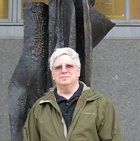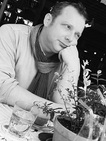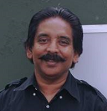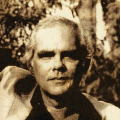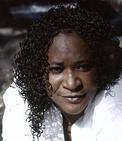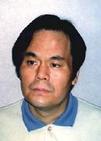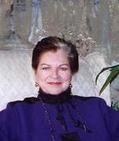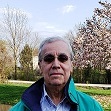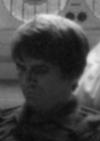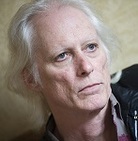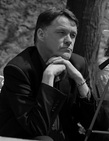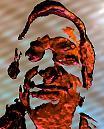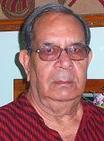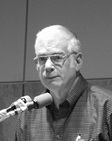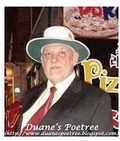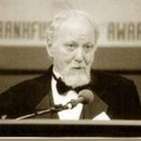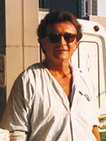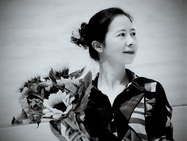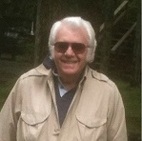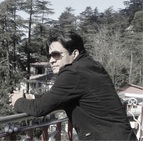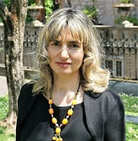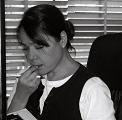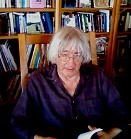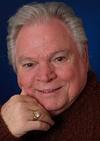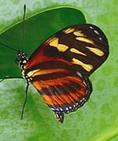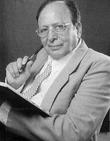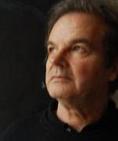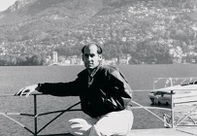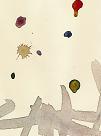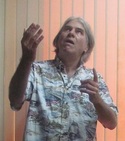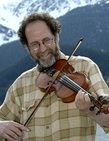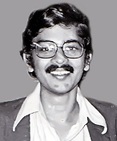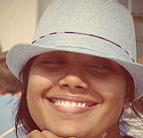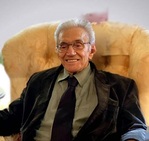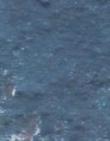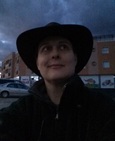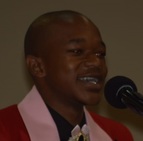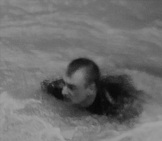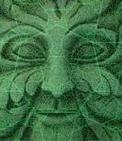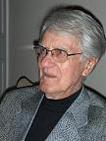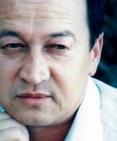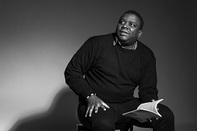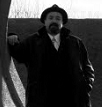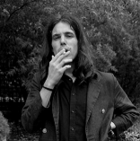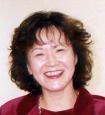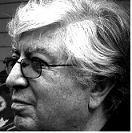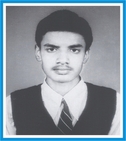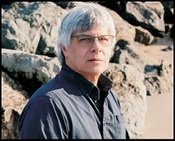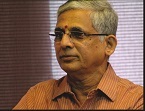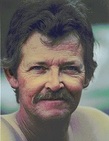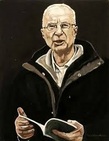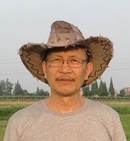A Question for the Gods: The Poetry of Ban'yu Natsuishi
| A Question for the Gods: The Poetry of Ban'yu Natsuishi |
By Patricia Prime I first came to the haiku of Ban'yu Natsuishi through his international and multilingual haiku magazine Ginyu, which has contributors from all over the world, although it is predominantly in Japanese. Ban'yu Natsuishi claims that no one can truly understand Japanese haiku in translation and, of course, much is lost in translation and the concentrated form of haiku loses more than longer poems. We have to take this into account when studying Natsuishi's haiku. We find that not only is some haiku poorly translated and the language proves inadequate, but that there are some images which are significant in a Japanese context, which are meaningless in translation. Natsuishi also claims that the Western reader and writer of haiku may misunderstand the purpose of the form and so we may have trite haiku. Ban'yu Natsuishi's name may not be well-known to Western readers of haiku, although it will be recognized by many Japanese readers and writers of haiku. His poetic voice is a strongly individual one, expressing the distinctive vision and sensibility of a writer capable of making himself the organ of the changes in the Western tradition of haiku writing. This essay focuses on the haiku and poetry of Natsuishi's latest collections Endless Helix and Flying Pope, both of which are written in Japanese. In Flying Helix the Japanese originals are translated into several languages: Portuguese, English, French, Spanish and Lithuanian, and in Flying Pope, the Japanese is translated into English. In his Introduction to Endless Helix, Prabal Kumar Basu talks about the introduction of haiku to Bengali poets, and the part Natsuishi had to play in the development of haiku: It is a genre of literature that evolved in Japan and is also practiced only there. For the rest of the world it is something which evokes only interest for the sake of research. A major reason for this obscurity was that hardly any haiku books of contemporary poets in English or English translation were easily available to us. It is not so anymore. The major credit for this change goes to Ban'ya Natsuishi, one of the foremost leading Haiku poets today, who along with his fellow colleagues has not only formed the World Haiku Association, but also has been relentless in their efforts to motivate poets from all over the world to induct Haiku in their compositions. (9). Endless Helix is divided into two sections that have much in common but explore the world from different perspectives; while the first part, containing haiku, navigates journeys of the senses, the second part, containing poems, turns to external journeys as the poems settle upon people, places and emotions. Natsuishi repeatedly provides an eye-witness account of creation as he finds it. He is a poet of the outdoors, a keen observer of nature and human nature. He is interested in the spiritual quality, the purpose and motivation of nature, which tend to remain forever elusive to the probing eye and mind. Natsuishi invites the reader to join his explorations and to take a closer look at the seemingly familiar, as we see in the following haiku from Endless Helix: The fountain spreads out concentric circles of water, winds and words However, Natsuishi is not taking stock of life. His poetic reality is shaped in the act of perceiving, in the focus on particular things and details that hint at a larger meaning and, at the same time, point to the questions we all ask of the gods. His contemplations on nature and to places familiar to him indicate that he knows nature and human nature by heart. Everything appears accounted for: the water, the trees and the flowers - even the night: "The night / is the mother of the day -- / a stone with two faces". Almost removed from the hustle and bustle of modern life, his poetry derives its patterns and rhythms from the seasons: With her child my sister returns home - a peach tree in full bloom Nature plays a central role and, in his haiku the only machines are saws disrupting the tranquility of the landscape: "Where there was a tree / near the pure spring -- / the noise of saws". The seemingly ordinary quickly loses its comfortable dullness, if one is willing to look behind the façade. It is there that nature hides its small miracles and secrets: Perfection is the symphony of the valley - a stray sheep To the speaker of these haiku, nature is God's open book and perpetual enigma, a source of comfort and disquiet, as elusive as any conception of its creator. Yet, the reassurance is there, the revelation in nature's small things - the fact that even after one's death everything remains the same: Even after my death cats will sing of love in Rome The poet seems to derive his strength and inner peace from such connections that reveal a fundamental truth about life which can be felt rather than explained. Endless Helix sets up a framework that allows for the serious as much as for the playful and ironic without compromising one or the other. This makes for a unique vision, often in stark contrast to what we expect in the Western tradition: However, Natsuishi does not shy away from making fun of human frailty: Even in the underworld women are combing men are fighting His ideas and wisdom are equally seasoned with irony: A cloud beyond any shape -- we have lost our memory Sometimes, the serious and playful successfully intermingle: The fog is a sigh of the sun -- the broken magic flute Natsuishi's haiku embraces paradoxes and contradictions that show a ready willingness to accept the world as it is and, at the same time, never to give up. Breaking news, foreign policies, and recent outrages are fringe phenomena in the speaker's world - unsettling, for sure, but strangely remote and inconsequential: A plastic bomb a human bomb - is the kamikaze wrong? Sometimes, Natsuishi seems worried by the danger of becoming exclusively a poet of flowers, trees and water, and that the safety of this small world belies the grave dangers that certain parts of the globe or humanity in general have to face. In several haiku, the peace and quiet is interrupted by the speaker's thoughts about the future: The gold and black in the picture -- which is our future? Structurally, Natsuichi's poetry does not hide where it comes from. The finished form recreates the process by which it came about, and the mental or physical journey on which it is based. Yet, ever so subtly, he not only finds his particular rhythm and style, but an approach, a way to focus and frame experience in such a way that readers are brought along and invited to see for themselves. At its best, his haiku build towards a revelation that takes the reader by surprise. Having been lured along by the building of rhythm of sounds and images, they suddenly bear witness to some greater insight, such as we see in the following haiku with its enigmatic suggestions of fate: In the southern countries life and death come from the same tree Especially in the quieter moments, there is always something to discover, a small revelation, a reassuring appreciation of life's fragility. Finally, the haiku in Endless Helix are followed by 20 Dreams - a group of quiet short poems in Japanese with English translations by Ban'ya Natsuishi and Jack Galmitz, which exhibit Natsuishi's poetic agility. Like other poets who translate landscape and culture into poetry that stalls us, Natsuishi presents images of place that reveals itself, so compellingly, in stages. Here are "Dream 4" and "Dream 19": Dream No. 4 In a deserted house, the songstress sings; suddenly it becomes a colorful temple of song. The houses around it recover their seven colors. Gather to the grand song festival tomorrow evening after an interval of 260 years! Dream No. 19
For Jack Galmitz
In New York, a great deal of yellow anti-depressant burnt under human skin. One day in February, without snow, the naked sun arose on the East River's flow. Only me, a Japanese, and a Puerto Rican walked the street. A wind like an iron club blows. Poetic movement, in my view a vital ingredient in any poem, may be established musically, emotionally, visually, linguistically, and on the level of thought. These poems engage our attention and demand a second reading. This extract from the Foreword to Flying Pope explains Natsuishi's humour in these haiku about the Pope: While it may be tempting to point out Natsuishi as l'Enfant terrible of contemporary haiku writing, his impudence is not intended to shock. It is, in fact, this sense of detachment in the author that binds together the childlike, the serious, the sarcastic, the humorous and the reflective - resulting in a splattering of surrealistic images that pose far more questions to the reader than give blatant commentary. Because of the masterly free flying construction, the reader is just as easily won over to the haiku of Ban'ya Natsuishi as he/she might be to adventuresome comic books and animated films. (Adam Donaldson Powell, 2008) Juxtapositions, such as we find in Flying Pope function not to insist that we experience each term in the light of the other but to control a potential experience: deflation is the guarantee of not endangering poise. The form of these haiku - not quite narrative, not quite lyrical, with minimal complexity, seldom varying in format - seems perfectly adapted to the project in hand: like the emotional world that it dramatizes. Flying Pope is friendly, but also ironic in tone. The question, then, is as old as minimalism itself: is there a way to loosen up and keep to haiku's standards? The observations in Flying Pope show a perfectly judged combination of tenderness and detachment; of humour and irony; and positions the Pope himself in lightly sketched, suggestive ways. The haiku are miniature dances in their own making, light-footed and agile, yet contribute so perfectly to the collection as a whole. Thus, what animates them beyond the poet's finely tuned ear is this critical ingredient: movement. It may be, for example, the movement within a single haiku, as in Fallen asleep the Pope flying to the north Here Natsuishi makes the words shimmy and shine with the sounds of the everyday. The pleasure of movement is to be found, too, in the shift between the intimate details of the material world and the philosophical reaches of the poet. A single haiku may be alive with difficult things such as faith, grief or love, and more readily tangible with things such as humour, as we see in the following two haiku: After winning the Nobel Prize the Flying Pope lost Flying Pope encounters in the sky the previous Pope What makes this collection stick is the way such things, both abstract and concrete, reappear to replenish and refresh the way you read them. Take, for example, the following two haiku: Playing a cello Flying Pope weeping
Entangled by Arabic letters the Pope flies on where the haiku move from image to image in a single breath. Natsuishi's poetry gives the reader much to think about, yet clearly stands as something that comes from the heart. On the one hand, we are moved by his haiku that finds life in a few simple words, on the other, we are moved by poetry that forms an open wound. This challenging poetry stands as a kaleidoscopic self-portrait where versions of the poet are refracted through an ever-shifting gaze. It is as though the poetic voice seeks to counter the end result.
|
Authors
Keep in touch
A Question for the Gods: The Poetry of Ban'yu Natsuishi
| A Question for the Gods: The Poetry of Ban'yu Natsuishi |
By Patricia Prime I first came to the haiku of Ban'yu Natsuishi through his international and multilingual haiku magazine Ginyu, which has contributors from all over the world, although it is predominantly in Japanese. Ban'yu Natsuishi claims that no one can truly understand Japanese haiku in translation and, of course, much is lost in translation and the concentrated form of haiku loses more than longer poems. We have to take this into account when studying Natsuishi's haiku. We find that not only is some haiku poorly translated and the language proves inadequate, but that there are some images which are significant in a Japanese context, which are meaningless in translation. Natsuishi also claims that the Western reader and writer of haiku may misunderstand the purpose of the form and so we may have trite haiku. Ban'yu Natsuishi's name may not be well-known to Western readers of haiku, although it will be recognized by many Japanese readers and writers of haiku. His poetic voice is a strongly individual one, expressing the distinctive vision and sensibility of a writer capable of making himself the organ of the changes in the Western tradition of haiku writing. This essay focuses on the haiku and poetry of Natsuishi's latest collections Endless Helix and Flying Pope, both of which are written in Japanese. In Flying Helix the Japanese originals are translated into several languages: Portuguese, English, French, Spanish and Lithuanian, and in Flying Pope, the Japanese is translated into English. In his Introduction to Endless Helix, Prabal Kumar Basu talks about the introduction of haiku to Bengali poets, and the part Natsuishi had to play in the development of haiku: It is a genre of literature that evolved in Japan and is also practiced only there. For the rest of the world it is something which evokes only interest for the sake of research. A major reason for this obscurity was that hardly any haiku books of contemporary poets in English or English translation were easily available to us. It is not so anymore. The major credit for this change goes to Ban'ya Natsuishi, one of the foremost leading Haiku poets today, who along with his fellow colleagues has not only formed the World Haiku Association, but also has been relentless in their efforts to motivate poets from all over the world to induct Haiku in their compositions. (9). Endless Helix is divided into two sections that have much in common but explore the world from different perspectives; while the first part, containing haiku, navigates journeys of the senses, the second part, containing poems, turns to external journeys as the poems settle upon people, places and emotions. Natsuishi repeatedly provides an eye-witness account of creation as he finds it. He is a poet of the outdoors, a keen observer of nature and human nature. He is interested in the spiritual quality, the purpose and motivation of nature, which tend to remain forever elusive to the probing eye and mind. Natsuishi invites the reader to join his explorations and to take a closer look at the seemingly familiar, as we see in the following haiku from Endless Helix: The fountain spreads out concentric circles of water, winds and words However, Natsuishi is not taking stock of life. His poetic reality is shaped in the act of perceiving, in the focus on particular things and details that hint at a larger meaning and, at the same time, point to the questions we all ask of the gods. His contemplations on nature and to places familiar to him indicate that he knows nature and human nature by heart. Everything appears accounted for: the water, the trees and the flowers - even the night: "The night / is the mother of the day -- / a stone with two faces". Almost removed from the hustle and bustle of modern life, his poetry derives its patterns and rhythms from the seasons: With her child my sister returns home - a peach tree in full bloom Nature plays a central role and, in his haiku the only machines are saws disrupting the tranquility of the landscape: "Where there was a tree / near the pure spring -- / the noise of saws". The seemingly ordinary quickly loses its comfortable dullness, if one is willing to look behind the façade. It is there that nature hides its small miracles and secrets: Perfection is the symphony of the valley - a stray sheep To the speaker of these haiku, nature is God's open book and perpetual enigma, a source of comfort and disquiet, as elusive as any conception of its creator. Yet, the reassurance is there, the revelation in nature's small things - the fact that even after one's death everything remains the same: Even after my death cats will sing of love in Rome The poet seems to derive his strength and inner peace from such connections that reveal a fundamental truth about life which can be felt rather than explained. Endless Helix sets up a framework that allows for the serious as much as for the playful and ironic without compromising one or the other. This makes for a unique vision, often in stark contrast to what we expect in the Western tradition: However, Natsuishi does not shy away from making fun of human frailty: Even in the underworld women are combing men are fighting His ideas and wisdom are equally seasoned with irony: A cloud beyond any shape -- we have lost our memory Sometimes, the serious and playful successfully intermingle: The fog is a sigh of the sun -- the broken magic flute Natsuishi's haiku embraces paradoxes and contradictions that show a ready willingness to accept the world as it is and, at the same time, never to give up. Breaking news, foreign policies, and recent outrages are fringe phenomena in the speaker's world - unsettling, for sure, but strangely remote and inconsequential: A plastic bomb a human bomb - is the kamikaze wrong? Sometimes, Natsuishi seems worried by the danger of becoming exclusively a poet of flowers, trees and water, and that the safety of this small world belies the grave dangers that certain parts of the globe or humanity in general have to face. In several haiku, the peace and quiet is interrupted by the speaker's thoughts about the future: The gold and black in the picture -- which is our future? Structurally, Natsuichi's poetry does not hide where it comes from. The finished form recreates the process by which it came about, and the mental or physical journey on which it is based. Yet, ever so subtly, he not only finds his particular rhythm and style, but an approach, a way to focus and frame experience in such a way that readers are brought along and invited to see for themselves. At its best, his haiku build towards a revelation that takes the reader by surprise. Having been lured along by the building of rhythm of sounds and images, they suddenly bear witness to some greater insight, such as we see in the following haiku with its enigmatic suggestions of fate: In the southern countries life and death come from the same tree Especially in the quieter moments, there is always something to discover, a small revelation, a reassuring appreciation of life's fragility. Finally, the haiku in Endless Helix are followed by 20 Dreams - a group of quiet short poems in Japanese with English translations by Ban'ya Natsuishi and Jack Galmitz, which exhibit Natsuishi's poetic agility. Like other poets who translate landscape and culture into poetry that stalls us, Natsuishi presents images of place that reveals itself, so compellingly, in stages. Here are "Dream 4" and "Dream 19": Dream No. 4 In a deserted house, the songstress sings; suddenly it becomes a colorful temple of song. The houses around it recover their seven colors. Gather to the grand song festival tomorrow evening after an interval of 260 years! Dream No. 19
For Jack Galmitz
In New York, a great deal of yellow anti-depressant burnt under human skin. One day in February, without snow, the naked sun arose on the East River's flow. Only me, a Japanese, and a Puerto Rican walked the street. A wind like an iron club blows. Poetic movement, in my view a vital ingredient in any poem, may be established musically, emotionally, visually, linguistically, and on the level of thought. These poems engage our attention and demand a second reading. This extract from the Foreword to Flying Pope explains Natsuishi's humour in these haiku about the Pope: While it may be tempting to point out Natsuishi as l'Enfant terrible of contemporary haiku writing, his impudence is not intended to shock. It is, in fact, this sense of detachment in the author that binds together the childlike, the serious, the sarcastic, the humorous and the reflective - resulting in a splattering of surrealistic images that pose far more questions to the reader than give blatant commentary. Because of the masterly free flying construction, the reader is just as easily won over to the haiku of Ban'ya Natsuishi as he/she might be to adventuresome comic books and animated films. (Adam Donaldson Powell, 2008) Juxtapositions, such as we find in Flying Pope function not to insist that we experience each term in the light of the other but to control a potential experience: deflation is the guarantee of not endangering poise. The form of these haiku - not quite narrative, not quite lyrical, with minimal complexity, seldom varying in format - seems perfectly adapted to the project in hand: like the emotional world that it dramatizes. Flying Pope is friendly, but also ironic in tone. The question, then, is as old as minimalism itself: is there a way to loosen up and keep to haiku's standards? The observations in Flying Pope show a perfectly judged combination of tenderness and detachment; of humour and irony; and positions the Pope himself in lightly sketched, suggestive ways. The haiku are miniature dances in their own making, light-footed and agile, yet contribute so perfectly to the collection as a whole. Thus, what animates them beyond the poet's finely tuned ear is this critical ingredient: movement. It may be, for example, the movement within a single haiku, as in Fallen asleep the Pope flying to the north Here Natsuishi makes the words shimmy and shine with the sounds of the everyday. The pleasure of movement is to be found, too, in the shift between the intimate details of the material world and the philosophical reaches of the poet. A single haiku may be alive with difficult things such as faith, grief or love, and more readily tangible with things such as humour, as we see in the following two haiku: After winning the Nobel Prize the Flying Pope lost Flying Pope encounters in the sky the previous Pope What makes this collection stick is the way such things, both abstract and concrete, reappear to replenish and refresh the way you read them. Take, for example, the following two haiku: Playing a cello Flying Pope weeping
Entangled by Arabic letters the Pope flies on where the haiku move from image to image in a single breath. Natsuishi's poetry gives the reader much to think about, yet clearly stands as something that comes from the heart. On the one hand, we are moved by his haiku that finds life in a few simple words, on the other, we are moved by poetry that forms an open wound. This challenging poetry stands as a kaleidoscopic self-portrait where versions of the poet are refracted through an ever-shifting gaze. It is as though the poetic voice seeks to counter the end result.
|

 Items in cart - View Cart
Items in cart - View Cart 




















